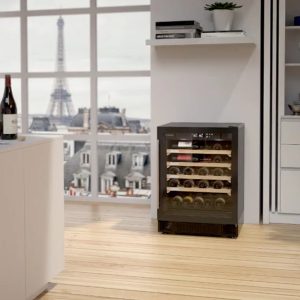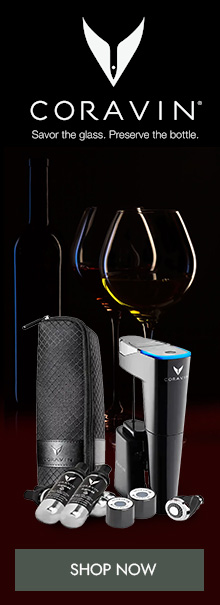Most wine collectors want to become connoisseurs of their trade. But to do so, they need to preserve their wines in the right manner. And that means understanding what equipment and machinery best supports the wine aging process. To that end, it’s important to know: what is the difference between a wine cooler and a wine fridge?
Different types of wines need different storage conditions. Storing wine for long periods of time requires an efficient wine cellar cooling unit. Although, you must distinguish the cooling unit from another hot wine storage commodity, the wine fridge.
So just what is the difference between a wine cooler and a wine fridge? Here’s a quick overview of what you should know.
What is a wine fridge (cabinet)?
 While some wine experts use the term wine fridge, it’s actually a misleading label. In fact, a wine fridge is actually another name for a wine cabinet.
While some wine experts use the term wine fridge, it’s actually a misleading label. In fact, a wine fridge is actually another name for a wine cabinet.
Wine cabinets are refrigerated devices that offer controllable environments for long-term storage of bottled wines. Wine cabinets are sophisticated cooling units that control temperatures, humidity, vibrations, and other environmental variables that influence the wine aging process.
Moreover, fine wines require the requisite time period, and consistent storage environments to achieve their premium flavours. Furthermore, this means maintaining those optimal conditions for months, years, or even decades, depending on the vintage.
Prime examples of quality wine fridge cabinets are ones that are manufactured by brands like Artevino or Eurocave. You can purchase quality wine cabinets from both brands here at Rosehill Wine Cellars.
Decorative wine storage cabinets
What else to know about wine cabinets (refrigerators)
Wine cabinets control humidity, which is essential to the wine aging process. The optimal humidity level within a wine cabinet is around 60%. To this end, a wine cabinet prevents humidity from the surrounding environment from corrupting the wines within the refrigerator.
Also, most wine cabinets are built for longevity. Even if the refrigeration system breaks down or becomes unreliable, you don’t need to replace the cabinet. It’s only the chiller that needs a repair.
Wine cabinets can also be customized to match the décor of any wine cellar. Therefore, treat your wines right and convert your storage unit into a treasured heirloom.
Wine cabinets come in various shapes and sizes, accommodating any variety of wine bottles. In addition, many wine cabinets are configured so that there is an area for bulk storage adaptable to entire cases.
Special considerations in regards to placement of wine cabinets must be considered. Typically, a wine cabinet requires adequate space surrounding the unit to properly function. If you have a low ceiling, ensure you have at least 6 inches of clearance above the cabinet.
What is a wine cooler?
Technologically advanced wine coolers
Whereas wine fridges are optimal to store wines for long periods of time, the opposite is true for wine coolers. Wine coolers are designed to create proper wine serving temperatures. As a result, this means the wine storage period is much shorter with wine coolers.
Additional details about wine coolers
Wine coolers that are designed for shorter storage periods are less expensive than their wine cabinet counterparts. Therefore, if you’re looking for faster, more affordable ways to get your wines to the proper temperature, a wine cooler is your best investment.
You’ll need to be mindful of the temperature settings on your wine cooler. Temperatures in a wine cooler heavily fluctuate over the long term. Particularly, these fluctuations occur because the insulation is inadequate.
Also, repairing wine coolers is a more arduous process than with wine fridges. When the refrigeration unit of a wine cooler goes out, the entire cooler needs to be replaced.
Finally, take into account the spacing restrictions within wine coolers. Larger wine bottles usually don’t fit within the dimensions of a standard wine cooler. In fact, wine coolers are typically designed for under-the-counter installation as opposed to being decorative.





